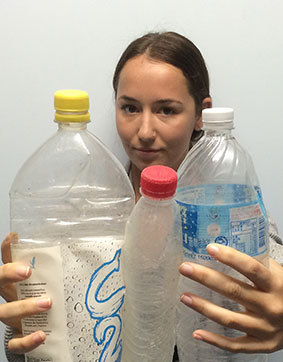Where does marine debris come from?

Southern Cross University (SCU) researchers are leading an investigation into the source of marine debris on the NSW north coast, following observations of a steady increase in debris from the sea.
For more than a decade, marine scientists have suggested 80% of marine debris comes from land and 20% from activities at sea. Associate Professor Steve Smith and student Kelsey Banister, of the National Marine Science Centre, are now challenging that claim through the collection of washed-up plastic drink bottles found on the beach.
“We are aiming to collect at least 1000 bottles from beaches between Coffs Harbour and the Tweed River,” Professor Smith said.
“We hope that the study will both raise awareness about the impacts of marine debris and provide information to help manage the problem locally, regionally and globally.”
Banister has already examined the first set of samples — 80 bottles from a remote beach at the northern end of the Solitary Islands Marine Park — and discovered that at least 50% were from overseas sources.
“We identified seven countries of origin for these bottles — China, Taiwan, Malaysia, Singapore, Philippines, Spain and the Netherlands,” she said. Just how the bottles ended up on our beaches is one of the research questions being addressed by the study.
Beach-goers who are interested in getting involved in the project are inviting to register their details with the Plastic Pollution on North Coast Beaches project.
Specsavers partnership tackles optical waste
A nationwide recycling program is addressing the growing number of old prescription glasses and...
Concrete repair key to sustainability
This National Recycling Week, Building Chemical Supplies encourages the construction and...
Researchers to create 'affordable' jet fuel from plant waste
A research hub at The University of Queensland is taking a unique approach to converting plant...








